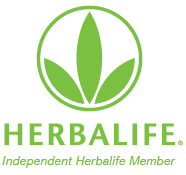Sun Salute & Basic Yoga Positions
This is a simple daily practice that I discovered in Deepak Chopra's book Perfect Health, The Complete Mind Body Guide. At the end of the routine you should finish up by lying on your back in the 'Awareness pose' for 5-10 minutes.
The Sun Salute
Time: 1-2 minutes for each cycle, moving slowly.
Repititions: 1-6 cycles in the morning, more as you become experienced.
The Sun Salute is a complete Ayurvedic exercise that simultaneously integrates the whole physiology-mind, body, breath.It strengthens and stretches all the major muscle groups, lubricates the joints, conditions the spine & massages the internal organs. Blood flow & circulation is increased throughout the body. With regular practice you will gain stability, suppleness, flexibility & grace.
Yoga Positions
Time: 10-15 minutes, moving slowly.
Repetitions: 1 set in the morning and 1 set in the afternoon
Guidlines
Perform the postures slowly, making sure you inhale & exhale, without holding the breath or controlling it in any way. Breathing should be easy, fluid & continuous.
Herbalife Nutrition strict product quality & purity processes
Diaphragmatic Breathing
The diaphragm is the most efficient muscle of breathing. It is a large, dome-shaped muscle located at the base of the lungs. Your abdominal muscles help move the diaphragm and give you more power to empty your lungs. But chronic obstructive pulmonary disease (COPD) may prevent the diaphragm from working effectively.
When you have pulmonary disease, air often becomes trapped in the lungs, pushing down on the diaphragm. The neck and chest muscles must then assume an increased share of the work of breathing. This can leave the diaphragm weakened and flattened, causing it to work less efficiently.
Diaphragmatic breathing is intended to help you use the diaphragm correctly while breathing to:
- Strengthen the diaphragm.
- Decrease the work of breathing by slowing your breathing rate.
- Decrease oxygen demand.
- Use less effort and energy to breathe.
Diaphragmatic breathing technique
Lie on your back on a flat surface or in bed, with your knees bent and your head supported. You can use a pillow under your knees to support your legs. Place one hand on your upper chest and the other just below your rib cage. This will allow you to feel your diaphragm move as you breathe.
Breathe in slowly through your nose so that your stomach moves out against your hand. The hand on your chest should remain as still as possible.
Tighten your stomach muscles, letting them fall inward as you exhale through pursed lips (see "Pursed Lip Breathing Technique_"). The hand on your upper chest must remain as still as possible.
When you first learn the diaphragmatic breathing technique, it may be easier for you to follow the instructions lying down, as shown on the first page. As you gain more practice, you can try the diaphragmatic breathing technique while sitting in a chair, as shown below.
To perform this exercise while sitting in a chair:
- Sit comfortably, with your knees bent and your shoulders, head and neck relaxed.
- Breathe in slowly through your nose so that your stomach moves out against your hand. The hand on your chest should remain as still as possible.
- Place one hand on your upper chest and the other just below your rib cage. This will allow you to feel your diaphragm move as you breathe.
- Tighten your stomach muscles, letting them fall inward as you exhale through pursed lips (see "Pursed Lip Breathing Technique"). The hand on your upper chest must remain as still as possible.
Note: You may notice an increased effort will be needed to use the diaphragm correctly. At first, you'll probably get tired while doing this exercise. But keep at it, because with continued practice, diaphragmatic breathing will become easy and automatic.
How often should I practice this exercise?
At first, practice this exercise 5-10 minutes about 3-4 times per day. Gradually increase the amount of time you spend doing this exercise, and perhaps even increase the effort of the exercise by placing a book on your abdomen.
Source of Information: https://my.clevelandclinic.org/health/articles/9445-diaphragmatic-breathing
I just found this photo of me taken 18 years ago
Just found this photo of me on the left taken in 2000 when I was 29. The photo on the right was taken in July 2018 age 47. I'm so thankful that I discovered Herbalife  Nutrition in 2002 & made the decision to become a Herbalife Independent Member. That decision totally altered the course of my life & my health.
Nutrition in 2002 & made the decision to become a Herbalife Independent Member. That decision totally altered the course of my life & my health.



